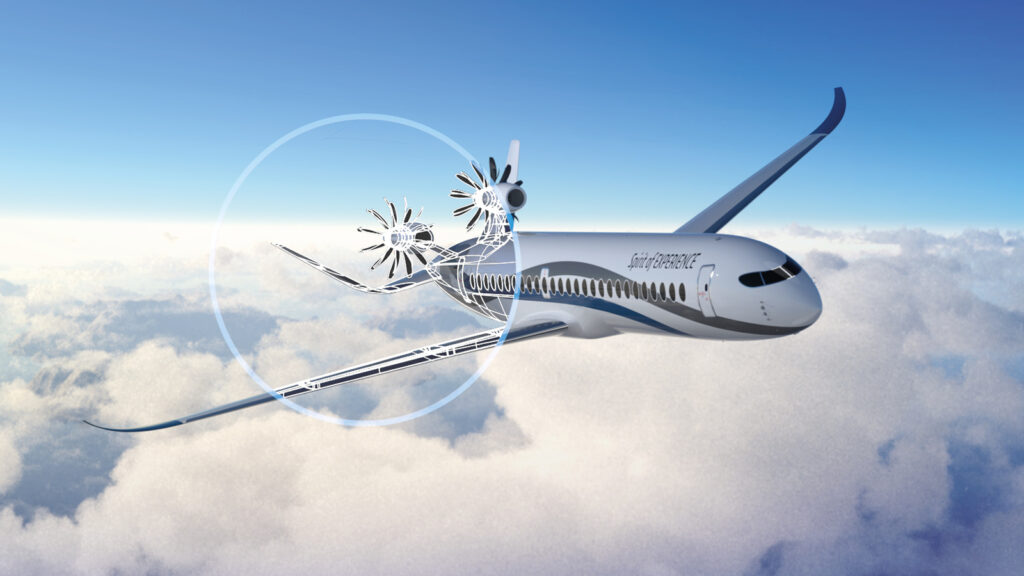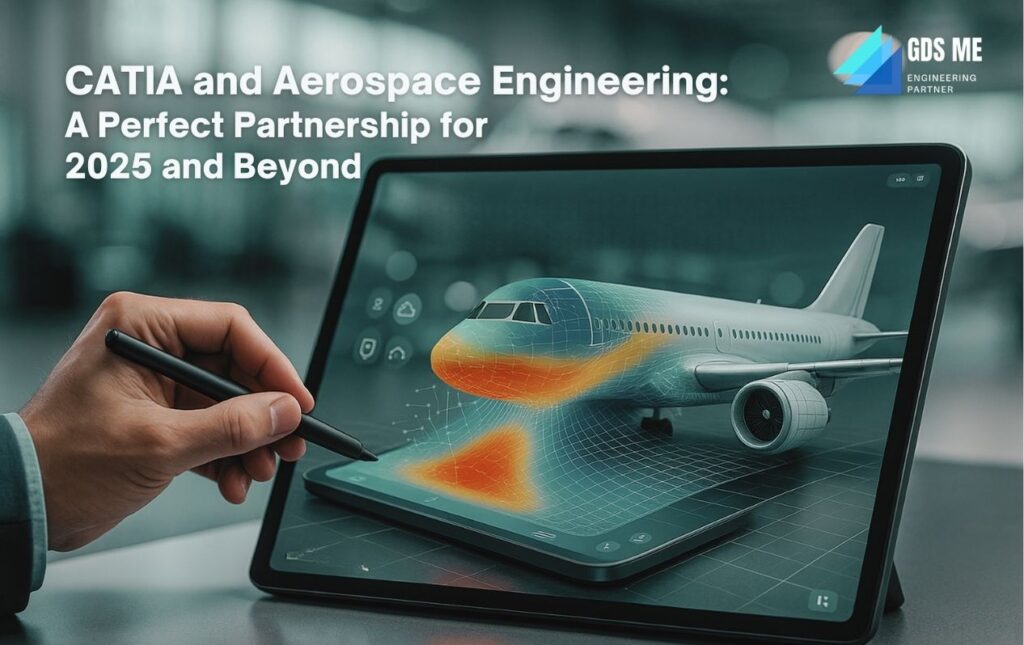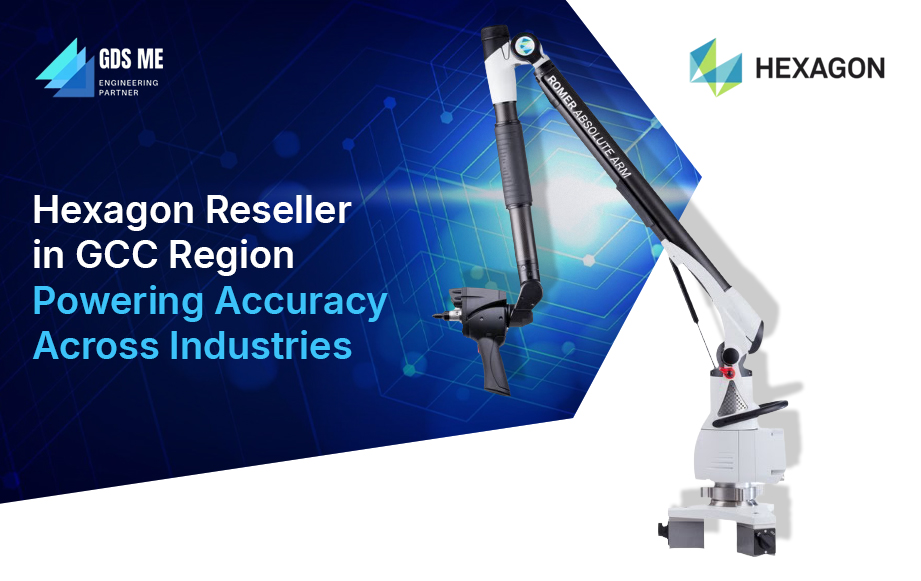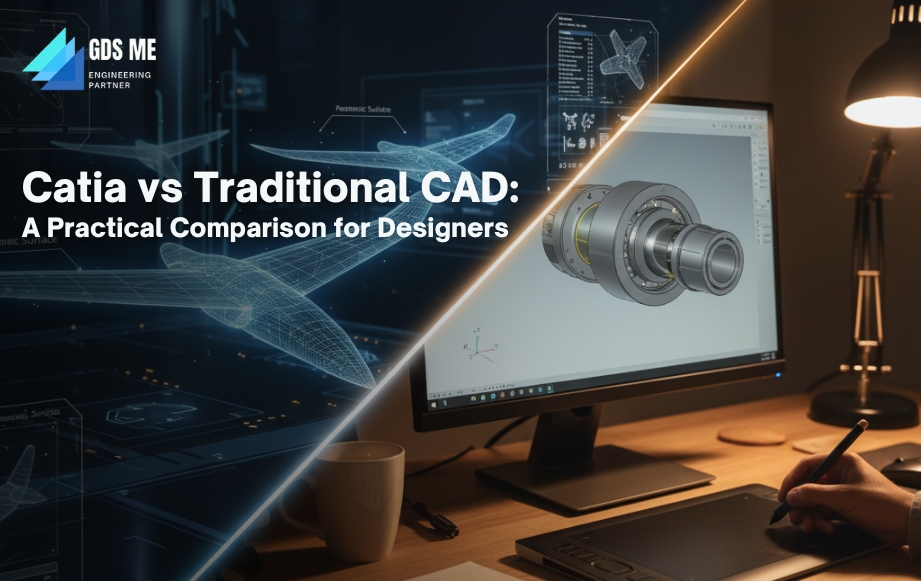When we talk about Aerospace in the GCC, it’s impossible to ignore the role of modern technology. CATIA is one of those tools that has quietly become the backbone of many projects in aviation and defense across the region. From the UAE’s ambitious aviation sector to growing aerospace initiatives in Qatar and Saudi Arabia, companies are turning to CATIA to bring bold ideas to life.
What makes CATIA special is its ability to simplify complicated engineering work effectively. Designing aircraft parts, testing aerodynamics, and ensuring everything works perfectly before it reaches production—CATIA makes all of this possible in one place. The CATIA latest version 2025 takes things a step further, giving teams smarter tools to design faster and more accurately.For aerospace businesses in the GCC, adopting CATIA isn’t just about keeping up with global standards. It’s about building safer, lighter, and more efficient aircraft while saving time and costs. In this blog, we’ll explore how CATIA supports the aerospace industry and how Generative Design Solutions Middle East (GDSME), a trusted CATIA reseller in the GCC region, helps businesses in the region get the most out of this powerful software.
What is CATIA?
In simple words, CATIA (Computer-Aided Three-Dimensional Interactive Application), developed by Dassault Systèmes, is a multiplatform, 3D interactive software. It’s where engineers sketch, test, and adjust aircraft parts without waiting for a physical model. You see the whole thing on the screen first, in full detail.
When engineers in Dubai design an aircraft wing, the 3D model is readily available, allowing for easy viewing from every angle. A team in Qatar can run airflow checks on the same model. Someone in Riyadh can see how it holds up in high heat. No one is working in isolation—they’re all connected to that single 3D design.
This is why CATIA has become a strong choice for the aerospace industry in the GCC. It’s not just about designing parts. It’s about keeping the work flowing between teams, no matter where they are working from, and making sure the aircraft is safe and efficient before production even starts.
CATIA Design Software: A Brief History

Credit – https://edstechnologies.com/products/catia/aerospace-defence/
CATIA has come a long way since its early days. Here’s a quick look at how it grew:
- 1977 – Developed by Avions Marcel Dassault for his own aircraft designs. At this stage, it was called CATI (Conception Assistée Tridimensionnelle Interactive).
- 1981 – Partnership with IBM. The name changed to CATIA, and it was released to the public.
- 1984 – Boeing adopted CATIA V3, marking its entry into global aviation projects.
- 1990 – General Dynamics used CATIA for naval ship design. The software also went global this year.
- 1998 – CATIA V5 launched, rewritten for Windows NT and XP systems.
- 2008 – CATIA V6 released with stronger collaboration features.
- 2014 – CATIA on the Cloud was introduced, alongside Dassault’s 3DEXPERIENCE platform.
- 2018 onwards – Marketplace integrations and updates made CATIA a bridge between designers and manufacturers worldwide.
Today, CATIA stands tall as a 3D design platform connecting teams, industries, and ideas worldwide.
Powerful Features of the CATIA Latest Version 2025
More than being a tool, CATIA software is a comprehensive ecosystem that helps aerospace companies in the GCC stay ahead. From sketching aircraft parts to simulating complex systems, CATIA has an impact on how safe, efficient, and cost-effective the final aircraft becomes.
From Sketch to Flight-Ready Design
Aircraft components don’t start as 3D models—they begin with sketches. CATIA latest version 2025 offers extraordinary sketching and modification tools. Engineers can easily draw complex shapes, adjust dimensions, and prepare designs for assembly and manufacture. For aerospace engineers, this means turning ideas into flight-ready parts faster than ever.
Designing the Invisible Systems
Planes aren’t just wings and engines—they rely on electrical wiring, HVAC, and fluid flow systems. The CATIA software lets engineers model all of this in one place. For aerospace projects in the GCC, it ensures systems function smoothly even in desert climates.
Smarter Systems, Smarter Aircraft
CATIA for aerospace supports behavioral modeling, letting engineers test system interactions before production. With support for C++ and Visual Basic, teams can create smarter cockpits, safer autopilot systems, and reliable sensors.
Engineering Without Silos – Advanced System Engineering
Integration is key. The advanced systems engineering platform in CATIA latest version 2025 brings modeling, analysis, and simulation together. Engineers get a full view of aircraft performance—ensuring safety, efficiency, and reliability before anything is built.
Collaboration Without Borders
A team in Doha, another in Dubai, and a supplier in Riyadh—CATIA software enables them to work on the same 3D model in real-time. For aerospace companies, this ensures seamless teamwork and no wasted time.
Connecting with the Marketplace
CATIA latest version 2025 also connects designers with manufacturers and parts suppliers. Whether working with a CATIA reseller in Kuwait or a CATIA reseller in Qatar, aerospace companies can source components faster and more efficiently.
CATIA for Aerospace: Features at a Glance
| Feature | How It Works? | Impact on Aerospace |
|---|---|---|
| Sketching & Modification Tools | Create precise drafts and adjust dimensions | Faster part design and accurate assemblies |
| Electrical & Fluid Systems Design | Model circuits, HVAC, and cooling systems | Reliable performance in extreme GCC conditions |
| Intelligent Systems Modeling | Supports C++/VB for behavioral modeling | Smarter cockpit systems and safer automation |
| Advanced Systems Engineering | Integrates modeling, analysis, and simulation | Full visibility of aircraft performance before production |
| Cloud-Based Collaboration | Teams share one live 3D model remotely | Smooth teamwork across GCC cities |
| Marketplace Interactivity | Connects directly with suppliers and manufacturers | Quicker sourcing of aerospace parts and components |
How GDSME Can Help Aerospace Teams in the GCC?
If you’re working in aerospace in the UAE, Qatar, or Saudi Arabia, having CATIA for aerospace is one thing—but knowing how to use it to its full potential is another. That’s where GDS Middle East comes in.
GDSME is a trusted CATIA reseller in UAE, SAUDI, Kuwait and Qatar, helping companies get the right licenses for commercial, research, and educational use. But they don’t just sell software. Their team provides hands-on support, training, and guidance so your engineers can make the most of CATIA latest version 2025.
Whether it’s designing wings, testing systems, or simulating complex aircraft components, GDS ensures your team is fully equipped. They help you speed up new product development, reduce mistakes, and keep your projects running smoothly with quality software and the right training.Looking for a license or training? Connect with GDS Middle East today and bring the power of CATIA V5 to your aerospace projects.
Why Choose GDS for CATIA in Aerospace?
In aerospace, the right software partner can be as important as the aircraft designs themselves. GDS Middle East (GDSME) is more than a reseller—we’re a partner helping aviation and defense teams across the GCC bring complex projects to life.
- Deep Aerospace Expertise – Designing an aircraft is also about safety, weight, and performance. From lightweight wing structures to full-system simulations, we help aerospace companies leverage CATIA to deliver stronger, safer designs.
- Tailored Solutions for Every Team – A project in the UAE might focus on building faster design cycles for new aircraft. In Qatar, the priority could be testing how parts perform in desert heat. In Saudi Arabia, teams may need smooth supplier integration. We help you personalize CATIA to meet specific aerospace needs.
- End-to-End Support – Aircraft programs run on strict timelines. Buying CATIA is just the start—using it effectively is what matters. We stay with your aerospace team at every step: training engineers to design more efficiently, setting up workflows for testing, and troubleshooting when projects get complex.
- Strong Regional Presence – Delays in aerospace works can incur significant costs. With GDSME experts spread across the GCC—UAE, Qatar, Kuwait, Saudi Arabia—we are easily reachable when you are in need!
- Dassault Systèmes Partner – CATIA is trusted by aerospace leaders worldwide. As a Dassault Systèmes partner, our role is to ensure that your aerospace projects meet global standards while remaining practical for your local needs.
Partner with GDSME, and get to know the smoothness as we understand aerospace, know your region, and ensure your aircraft projects are safer, faster, and more efficient.
Behind every aircraft design are engineers with big ideas. CATIA gives them the tools. GDSME gives them the support. Together, we help turn vision into flight.
FAQs
A. CATIA is used in designing, testing, and simulating aircraft parts and systems before production.
A. Smarter sketching, advanced system modeling, and faster collaboration for aerospace teams.
A. Because we offer licenses, training, and local support across the UAE, Qatar, Kuwait, and Saudi Arabia.
A. Yes—wiring, fluid flow, and cockpit systems can all be modeled within a single platform.







